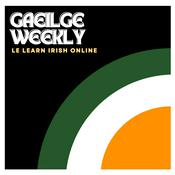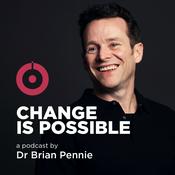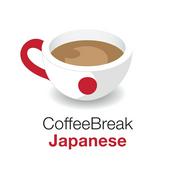114 episodes

Culturally Responsive Lactation Care with Jewish Families with Maya Lott, IBCLC
07/1/2026 | 41 mins.
In this episode of Behind the Latch, Margaret sits down with former student and practicing IBCLC Maya Lott to explore culturally responsive lactation care through the lens of working with Jewish families. Drawing from Maya’s clinical experience, academic background in Jewish philosophy and law, and her widely shared paper on counseling Jewish families, this conversation offers practical guidance for IBCLCs seeking to build trust, reduce friction, and deliver truly family-centered care.Maya shares how cultural norms, religious practices, and community structures can shape breastfeeding decisions—and how IBCLCs can approach these dynamics with curiosity rather than assumptions. From baby naming practices and modesty considerations to Shabbat, donor milk logistics, and the role of rabbis in healthcare decision-making, this episode provides concrete, respectful strategies clinicians can use immediately in practice.🔍 What We Talk AboutMaya’s path to becoming an IBCLC through Pathway 2—and why it worked well for her as a parentWhy cultural humility matters in lactation care (and what it looks like in real visits)Breastfeeding as a cultural norm in many Jewish communities—and the pressures that can createBaby naming practices in observant Jewish families and why asking “Does your baby have a name yet?” mattersModesty, family roles, and how they can influence in-home lactation visitsPreparing infants for circumcision (bris) and how this can intersect with feeding supportShabbat, milk removal, and how IBCLCs can collaborate respectfully without practicing religious lawThe role of rabbis in health-related decisions—and why this can be empowering for familiesDonor milk, milk sharing, and kosher kitchen logisticsHow informal milk sharing functions in tight-knit communitiesParallels with other cultural and religious practices (including Muslim milk-kinship laws)Practical language IBCLCs can use to avoid alienation and build rapportWhy curiosity—not expertise in religious law—is the key clinical skill🧠 Key Takeaways for CliniciansCultural competence starts at the doorstep—small language choices can shape the entire visit.You don’t need to be an expert in religious law to provide excellent care; awareness of considerations is enough.Asking open, respectful questions helps families integrate lactation care with lifelong values.Rabbis (and other faith leaders) often serve as supportive collaborators, not barriers, in healthcare decisions.

Craniosacral Therapy and Infant Feeding with Meaghan Beames, RMT
17/12/2025 | 1h
Lactation Exam Mastery Course! Master the IBCLC Exam Today!In this episode of Behind the Latch, Margaret interviews Meaghan Beames, Registered Massage Therapist, educator, and infant craniosacral therapy specialist based in Toronto. Meaghan shares her journey into craniosacral therapy following her own early breastfeeding struggles and explains how this gentle, hands-on modality can support infants experiencing feeding difficulties, poor latch, weak suck, reflux, tension patterns, and post-birth dysregulation.Together, Margaret and Meaghan unpack what craniosacral therapy actually is—and what it is not—moving beyond common misconceptions of it as “woo” or energy work. Meaghan offers a clear, physiology-based explanation grounded in fascia, cranial nerve function, nervous system regulation, and developmental biomechanics, helping clinicians understand how subtle tension patterns from gestation and birth can profoundly affect infant feeding and behavior.Throughout the conversation, they explore the clinical intersections between lactation care and bodywork, including the role of cranial nerves in suck function, the relationship between birth mechanics and oral dysfunction, and how craniosacral therapy may improve outcomes before and after frenotomy. Meaghan also provides practical language clinicians can use with families, guidance on practitioner training and safety, and insight into when referrals to other disciplines are appropriate.🔍 What We Talk AboutHow Meaghan entered infant craniosacral therapy after her own postpartum and breastfeeding experienceWhat craniosacral therapy is, how it works, and how it differs from chiropractic, osteopathy, and physical therapyFascia, tension patterns, and why the body must be viewed as a single integrated systemThe role of cranial nerves in infant feeding, suck strength, and oral coordinationHow gestational positioning, birth interventions, and delivery mechanics influence feeding outcomesWhy babies may feed well on one side but struggle on the otherWeak suck, poor oral sensation, and why some infants “can’t feel” the nippleThe limitations of appearance-based tongue-tie assessment and why function must come firstHow craniosacral therapy may improve frenotomy outcomes and reduce reattachment riskWhy cutting a dysfunctional tongue without addressing body tension can worsen feedingWhat a typical infant craniosacral session looks like, including assessment and treatment flowHow many sessions are typically needed and why “snapback” can occurHow craniosacral therapy supports nervous system regulation and reflex integrationWhat families may notice after treatment, including emotional release and behavior changesHow to talk with parents about craniosacral therapy in clear, non-alarming languageSafety considerations, training standards, and how to identify qualified practitionersWhat the current research does—and does not—tell us about craniosacral therapyOptions for families who cannot access or afford bodywork services🧠 Key Takeaways for CliniciansInfant feeding difficulties are often rooted in whole-body tension patterns, not isolated oral anatomy.Cranial nerve dysfunction can impair suck, coordination, and sensation even when oral anatomy appears “normal.”Craniosacral therapy uses extremely light touch to identify and release fascial restrictions affecting function.Birth mechanics, including fetal position and obstetric interventions, can significantly impact feeding.Frenotomy without addressing underlying body tension...

Why Early Colostrum Feeding Matters: Insights from Dr. Valérie Verhasselt
10/12/2025 | 46 mins.
Lactation Exam Mastery Course! Master the IBCLC Exam Today!In this episode of Behind the Latch, Margaret interviews Dr. Valérie Verhasselt, Professor of Immunology at the University of Western Australia and Head of the LRF Centre for Immunology and Breastfeeding. Dr. Verhasselt discusses her groundbreaking research on colostrum and food allergy prevention, focusing on her recent study demonstrating that partial colostrum feeding in the first 72 hours of life increases the risk of peanut allergy, while exclusive colostrum feeding appears profoundly protective. Her findings offer a powerful reframing of early postpartum lactation care: the risk may not stem solely from early cow’s milk exposure, but from reduced colostrum intake during the critical adaptation period when the newborn’s gut, immune system, and microbiota are being programmed. She explains how colostrum’s unique concentration of growth factors, IgA, vitamin A, and immune-modulating bioactive components help seal the gut, seed the microbiome, strengthen the skin barrier, and establish immune tolerance—laying the foundation for lifelong resilience. Dr. Verhasselt also shares insights from mouse models, discusses why donor mature milk is not a substitute for colostrum, and explores future directions including donor colostrum banks, colostrum-derived therapeutics, and new research on colostrum’s role in brain development. https://pubmed.ncbi.nlm.nih.gov/40968490/🔍 What We Talk AboutHow Dr. Verhasselt entered lactation immunology after a “flash” inspiration during her early research career Why the transition from intrauterine to extrauterine life makes newborns uniquely vulnerable to allergy developmentHow colostrum supports gut closure, immune regulation, microbiota seeding, and skin barrier maturationWhy giving formula in the first days displaces colostrum intake rather than simply “topping up” Evidence showing a five-fold increase in peanut allergy among infants who received partial colostrum feedingThe striking finding that no infants who received ≥9 colostrum feeds developed peanut allergy by 12–18 monthsWhat early formula exposure does to the infant microbiome weeks and months laterHow parental allergy risk influences—but does not override—the protective effect of colostrumWhy exclusive breastfeeding data often overlook the critical first 72 hoursThe interplay between infant skin permeability, environmental exposure, detergent use, and allergy sensitizationWhat mouse models teach us about colostrum, mature milk, and developmental programmingWhy donor milk does not replicate colostrum’s early immunological functionThe concept of exclusive colostrum feeding as a distinct clinical and public health priorityFuture research avenues: colostrum-derived metabolites, donor colostrum banks, and early-life allergy prevention strategies🧠 Key Takeaways for CliniciansColostrum’s immunological role is unique and time-sensitive—its composition cannot be replicated by mature milk, donor milk, or formula.Supplementation in the first days displaces colostrum volume, which may be the primary mechanism increasing allergy risk.As few as nine colostrum feeds in the first 72 hours appear profoundly protective against peanut allergy.Early formula exposure—even brief—can alter the infant gut...

Inside the Lactating Breast: Ultrasound, Adiposity & Milk Production with Dr. Zoya Gridneva
03/12/2025 | 30 mins.
LACTATION EXAM MASTERY COURSE- Stop Guessing How to Study for the IBCLC Exam. In this episode of Behind the Latch, Margaret interviews Dr. Zoya Gridneva, Research Fellow with the Geddes–Hartmann Human Lactation Research Group. Zoya discusses her research exploring maternal adiposity, glandular tissue distribution, breast anatomy, milk production, puberty timing, parity, and breast development across lactations, using ultrasound imaging to examine the lactating breast in a way few studies have before Her findings help illuminate why some parents experience low supply despite doing “everything right,” and demonstrate how maternal factors—especially adiposity—may influence glandular tissue development, breast storage capacity, and milk removal efficiency. She also shares emerging tools that may help clinicians screen for lactation risk prenatally and why early identification may matter profoundly for parental experience and outcomes.🔍 What We Talk AboutHow Zoya entered lactation research after her own breastfeeding experience Why adiposity is emerging as a central factor in milk production outcomes What ultrasound can tell us about ductal branching, glandular volume, and breast storage capacity Why more ductal development doesn’t always equal meaningful clinical increase in supply The relationship between puberty timing, parity, contraception, adiposity & milk output — what we know and what we don’t Why breast size ≠ glandular volume, and why small breasts may produce normal volumes The need for better screening for primary low supply and insufficient glandular tissue (IGT)A new 5-minute lactation risk screening tool used in Western Australia & its clinical promise Why single-feed weights are not enough — and why 24-hour production is more meaningful Where research must go next: larger samples, longitudinal data, and early-life glandular development🧠 Key Takeaways for CliniciansAdiposity may influence breast growth, glandular proportion, and storage capacity, mediating supply outcomes.Ultrasound can visualize breast structure but requires skill, training, and access — not yet feasible for routine care.We may be able to identify high-risk parents prenatally using simple clinical screening tools, improving early intervention timing.Puberty, hormonal exposure, and menarche timing could play a significant role in final glandular development — a research area wide open for exploration.24-hour test-weighing is one of the most reliable ways to identify low production early, long before a “weight problem” appears.Clinically, risk awareness + early frequent milk removal support may be key for at-risk families.👩🏫 GuestDr. Zoya Gridneva, PhDMaternal Factors, Breast Anatomy & Milk Production — An Ultrasound-Based Look Inside LactationResearch Fellow, Geddes–Hartmann Human Lactation Research GroupUniversity of Western Australia📝 Connect with Margaret📬 Email: [email protected]📸 Instagram: @margaretsalty📘 Facebook: Margaret Salty🎙️ Podcast: Behind the LatchHosted by: Margaret...

Why Outpatient IBCLC Care Matters: A Conversation with Dr. Anita Lugo
26/11/2025 | 39 mins.
In this episode of Behind the Latch, Margaret Salty interviews Dr. Anita Lugo, Pediatric Nurse Practitioner, IBCLC, researcher, and Assistant Professor at Moravian University in Pennsylvania.Dr. Lugo’s work focuses on one of the most critical—and often overlooked—components of breastfeeding success: outpatient lactation care after hospital discharge. Her recent review highlights the powerful impact of early, skilled IBCLC support on breastfeeding exclusivity and duration, and shines a light on the persistent gaps families face when navigating the postpartum period.Together, they explore the evidence behind outpatient IBCLC interventions, the systemic barriers that prevent equitable access to care, and the urgent need for stronger policies, better reimbursement models, and more consistent pathways for families to receive the level of support they truly need.Dr. Lugo also discusses how timing, frequency, and modality of lactation care—whether in-person, outpatient clinic, in-home, or telehealth—shape outcomes, and what future research should focus on to strengthen breastfeeding support across diverse communities.They discuss:Why many breastfeeding challenges intensify after families leave the hospitalEvidence showing that IBCLC support at 3 days and 2 weeks postpartum yields the best outcomesGaps in outpatient access, especially for families with Medicaid or grandfathered plansGeographic disparities in IBCLC availability and why they matterThe limitations of relying solely on prenatal classes or hospitalization supportThe role of telelactation and what parents find helpful—or challenging—about virtual consultsThe need for clearer distinctions between lactation credentials and their scopes of practiceHow policy, insurance reform, and better public awareness could improve breastfeeding equityFuture research needed on optimal visit numbers, timing, and support models👩🏫 Guest InfoDr. Anita Lugo, DNP, PNP, IBCLCAn integrative review of the impact of International Board Certifed Lactation Consultants in outpatient postnatal settings in the United StatesAssistant Professor, Moravian UniversityPediatric Nurse Practitioner & IBCLCPrenatal Educator, St. Luke’s University HospitalLinkedIn: Anita Lugo📝 Connect with Margaret📬 Email: [email protected]📸 Instagram: @margaretsalty📘 Facebook: Margaret Salty🎙️ Podcast: Behind the LatchHosted by: Margaret SaltyMusic by: The Magnifiers – My Time Traveling Machine#BehindTheLatch #BreastfeedingSupport #LactationResearch #OutpatientLactation #IBCLC #PostpartumCare #BreastfeedingEquity #MaternalHealth #LactationPolicy #PublicHealthLactation #Telolactation #BreastfeedingOutcomes #InfantFeeding #NewParentSupport🎧 Listen now on your favorite podcast app — and don’t forget to subscribe and leave a review!
More Education podcasts
Trending Education podcasts
About Behind the Latch
Listen to Behind the Latch, The Mel Robbins Podcast and many other podcasts from around the world with the radio.net app

Get the free radio.net app
- Stations and podcasts to bookmark
- Stream via Wi-Fi or Bluetooth
- Supports Carplay & Android Auto
- Many other app features
Get the free radio.net app
- Stations and podcasts to bookmark
- Stream via Wi-Fi or Bluetooth
- Supports Carplay & Android Auto
- Many other app features


Behind the Latch
download the app,
start listening.


































